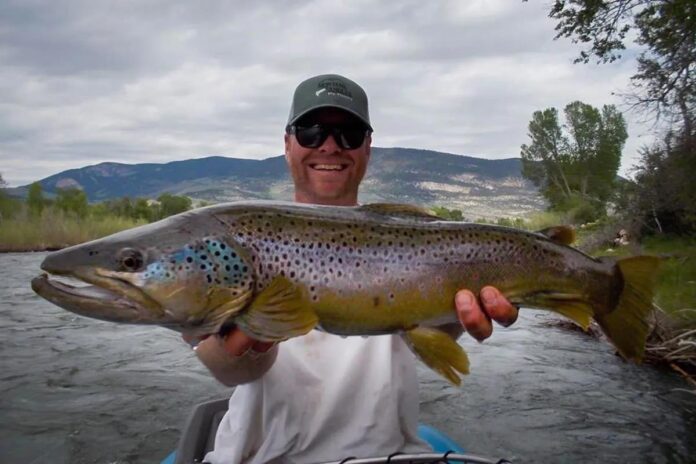Written by: Montana Angler Fly Fishing
Catching a truly massive brown trout is a lifelong pursuit for many anglers. While browns are common in many of Montana’s best fly fishing rivers, catching and landing big browns over 20 inches is a challenge. Rainy days can be a blessing for anglers in pursuit of the largest brown trout in the river. These elusive fish are more active during overcast and rainy weather, making it an ideal time to hook a trophy-sized brown trout. However, fishing in the rain comes with its own set of challenges. Here are five valuable tips to help you catch huge brown trout when the heavens open up.
1. Understand Brown Trout Behavior in the Rain
Before we dive into specific tactics, it’s essential to understand why brown trout behave differently in the rain. Rainfall has a noticeable impact on water conditions and temperature. Here’s how it affects brown trout:
- Increased Oxygen Levels: Rainfall can oxygenate the water, making brown trout more active and willing to feed. As rain falls, the droplets themselves become saturated in dissolved oxygen. The disturbance of the falling rain also creates more surface area in long flats, further increasing oxygen levels. This is especially important in the heat of summer when dissolved oxygen can be an issue.
- Temperature Moderation: Rainwater can slightly lower water temperatures, making brown trout comfortable and encouraging them to stay closer to the surface.
- Reduction in direct light: Big browns don’t love bright, direct sunlight. Often the largest browns in the river become nocturnal in the summer months. As heavy clouds roll in during a rain storm, the lower ambient light can trigger a midday feeding event.
- Cover for the angler: The sound of raindrops hitting the water’s surface can help mask your presence, making it easier to approach trout without spooking them.
- Increased food supply: A heavy rain can wash terrestrial insects and aquatic invertebrates into the water, providing a feast for hungry brown trout.
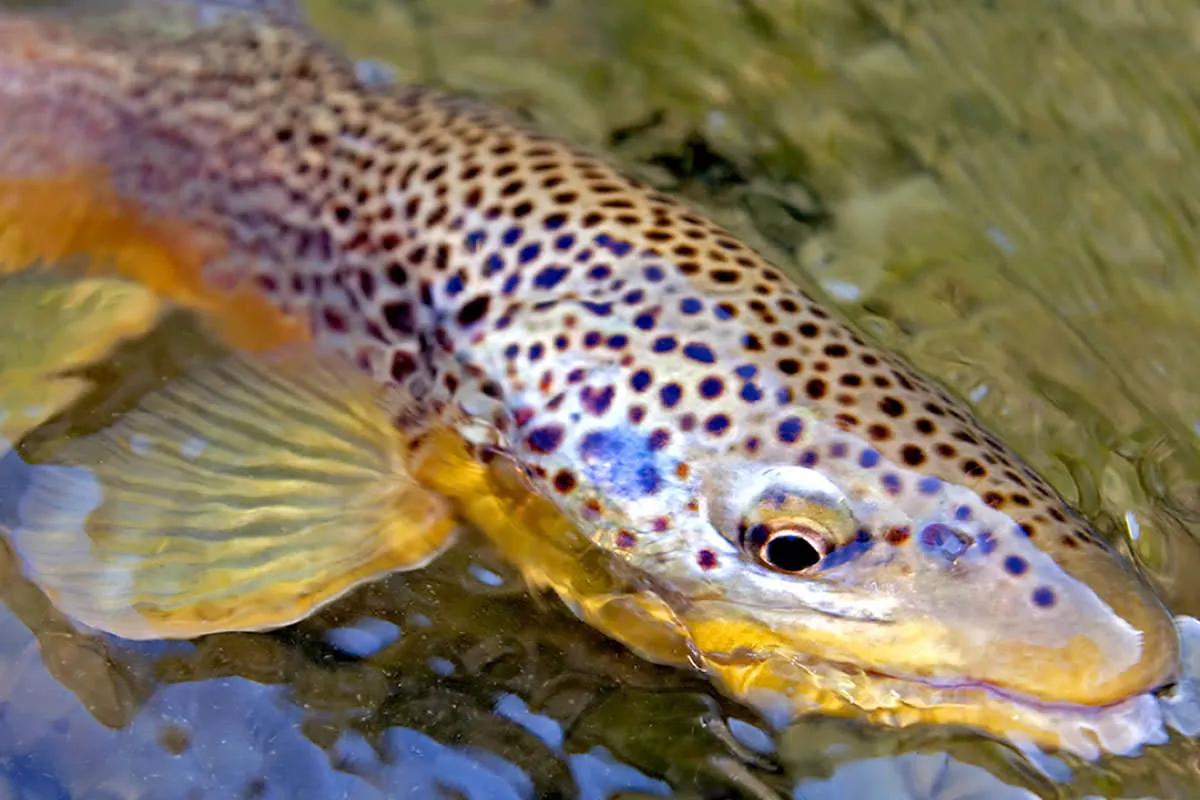
2. Use Streamers or Large Wet Flies
When it’s raining, brown trout are more likely to chase larger prey items due to increased water flow and food availability. Streamers are the perfect choices for mimicking sculpins and other baitfish. Choose larger patterns to entice the largest fish in the river. Nymphs and wet flies can also produce, but use larger patterns that imitate crayfish or the largest stoneflies. When fishing streamers, remember to vary your retrieve speed and depth until you find what works best on that particular day. Sometimes a slow, steady retrieve is effective, while other times a fast and aggressive retrieve will trigger more strikes.
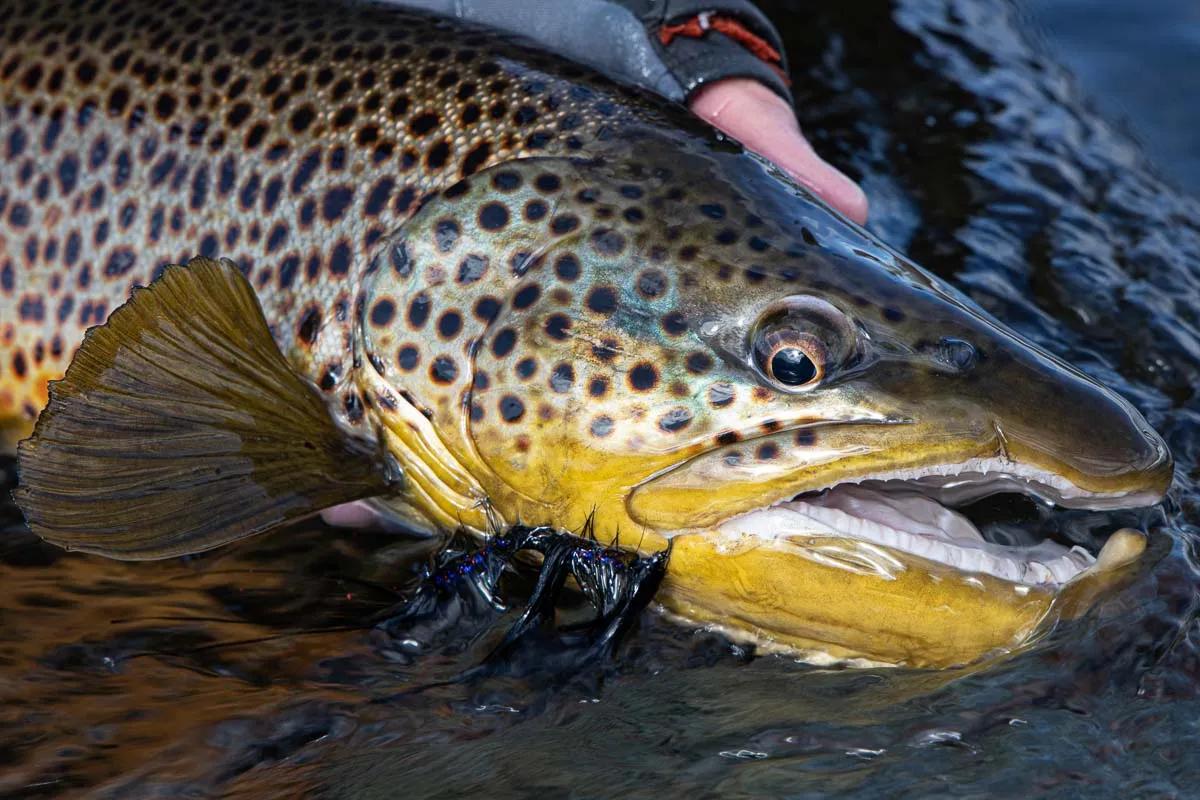
3. Fish Heavy Tippet
Brown trout are known for their keen eyesight and wariness. Fortunately when clouds darken the sky and the fish go on the hunt, they drop their guard a bit. If you are going to swing for the fences when rains kick off a big fish feeding binge, make sure you are prepared. There is nothing more disappointing than having a heavyweight brown smash your streamer only to have it break off because you were fishing 4X. Don’t be afraid to switch to 3X when swinging wet flies or fishing large nymphs. When fishing streamers, you can even upsize to 1X or 2X tippet.
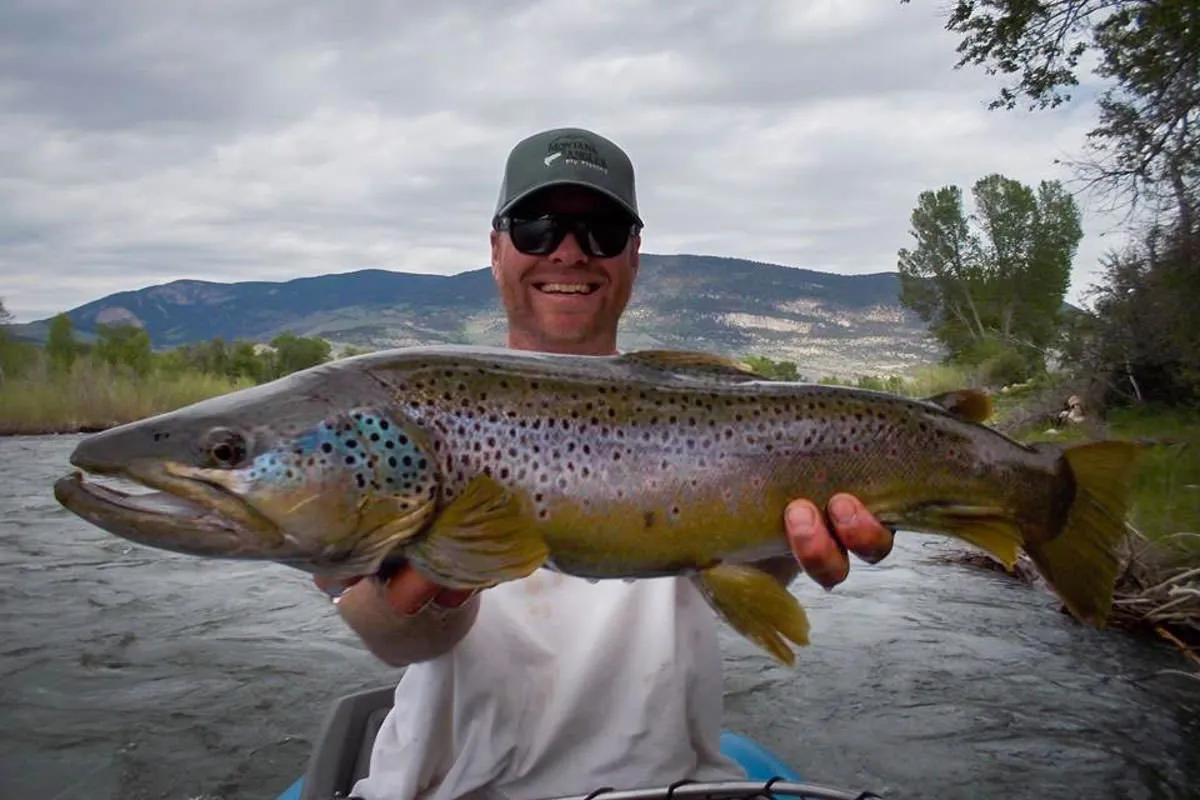
4. Focus on Sections of Rivers Where Big Fish Hunt
Remember really large browns are hunters, so you need to focus on the sections of the river where big fish go to hunt. Although these trout may rest at the bottom of deep runs, feeding locations are different. When big fish are truly on the hunt, they look for the productive sections of the river where they can ambush larger prey. Don’t be surprised to find them in relatively shallow water, as this is often where the most baitfish are found. Prime hunting grounds include riffles, weedbeds, shallow glides, and tail-outs.
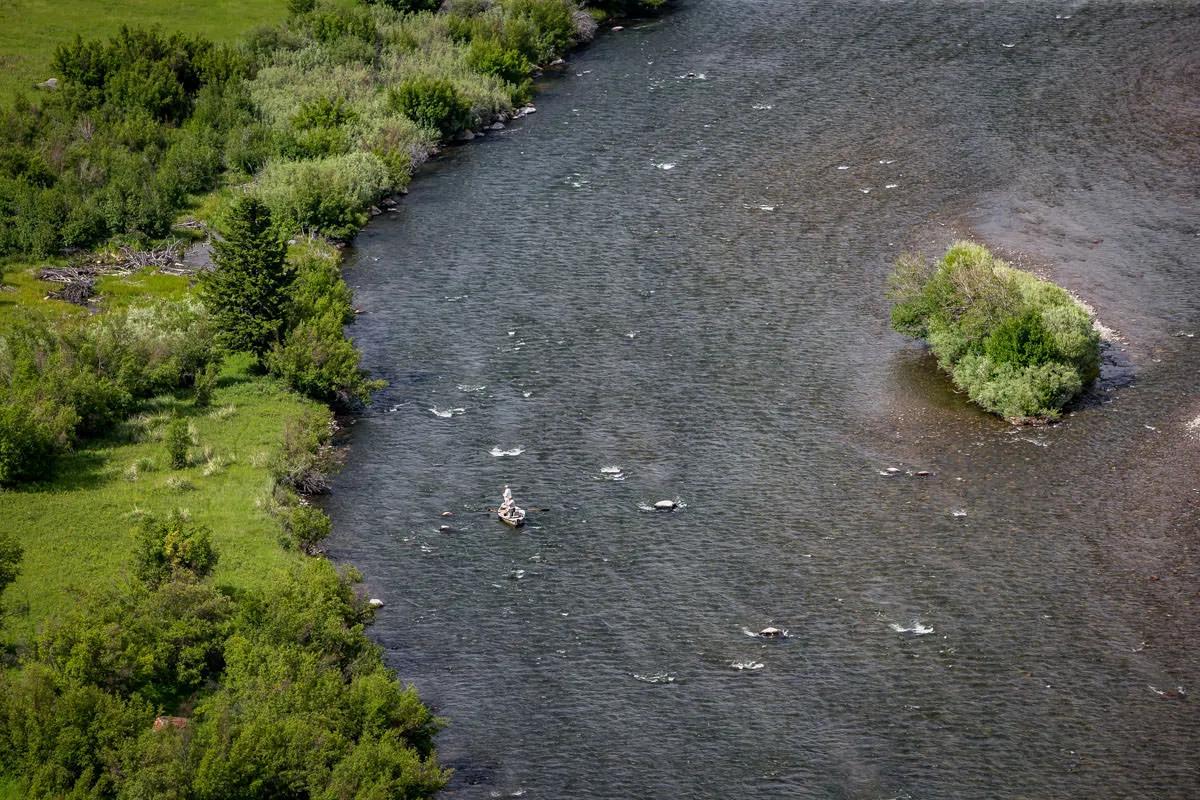
5. Monitor the Weather and Be Prepared for the Elements
Montana is an arid state where rain is the exception rather than the rule. If you want to up your odds of finding big fish feeding, you need to target days with higher chances of inclement weather and then be prepared for the elements when they arrive.
- Stay Informed: Check weather forecasts before heading out. If it is midsummer, look for days with a strong chance for afternoon showers. Larger weather systems can also produce great fishing and are usually easy to target when reviewing a 10 day forecast.
- Be prepared for rainy weather. Always have a foul weather kit that includes some warm layers and rain gear handy. If you are wet-wading, also make sure rain pants are part of your kit. It is difficult to keep your focus when you are cold, so make sure you can quickly gear up with the proper layers and outerwear to keep you comfortable while you focus on the fishing.
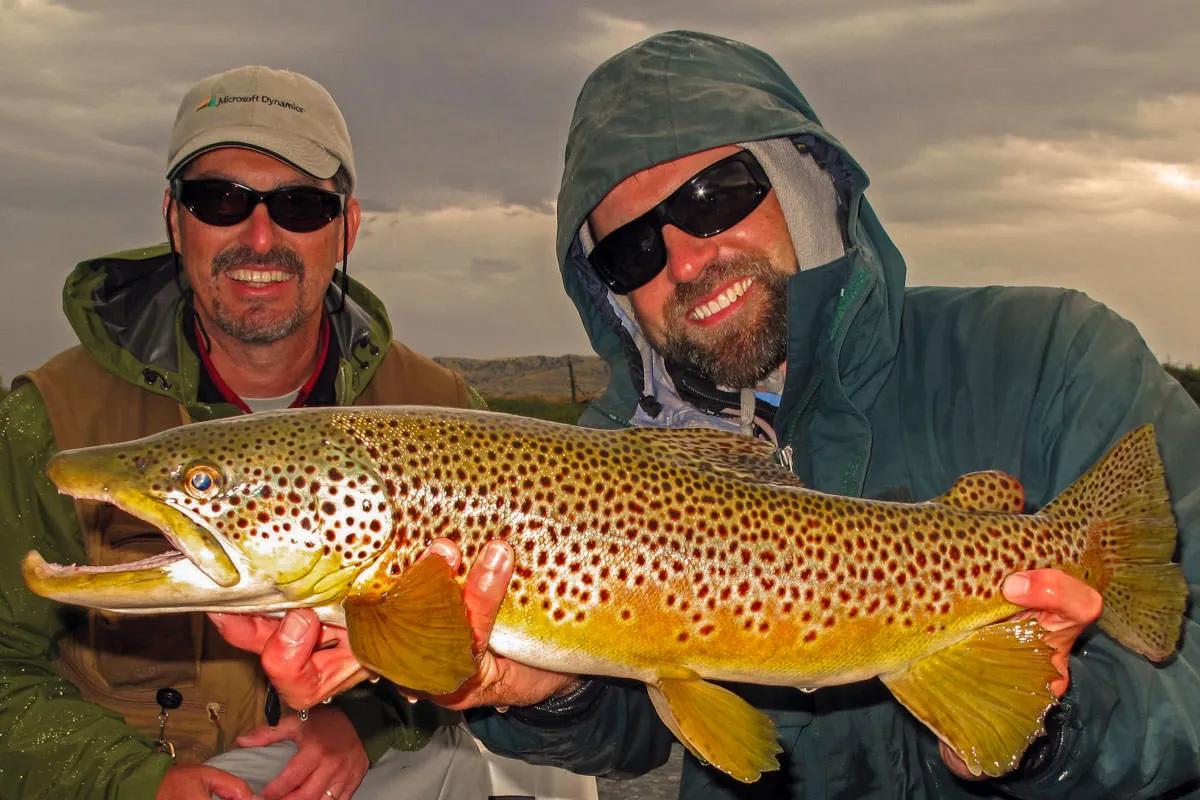
Fishing for huge brown trout in the rain can be a rewarding experience for anglers who are prepared and patient. Understanding brown-trout behavior in wet conditions, using the right flies, upsizing your tippet, focusing on water where big fish go to feed, and dressing for the elements are key strategies for success. So, grab your rain gear, head to your favorite brown trout waters, and put these tips to use the next time the skies open up. With the right approach, you might just land the trophy brown trout of your dreams.
Montana Angler Fly Fishing is an Orvis-Endorsed Fly-Fishing Expedition in Bozeman, Montana, which operates the Madison, Yellowstone, Gallatin, Missouri, and Big Hole Rivers, as well off-the-beaten-path waters that you may not have heard of.

Credit: Source link

















